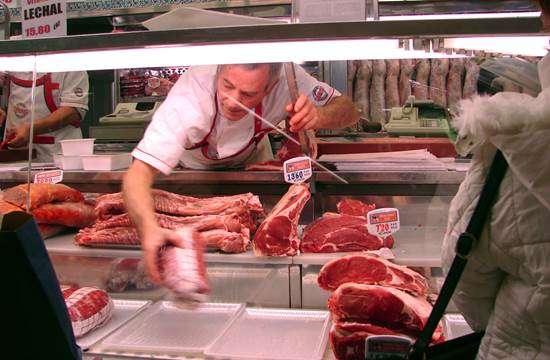Removing environmental pollutants from raw meat

Six months ago, the International Agency for Research on Cancer associated consumption of red meat and processed meat to cancer risk. However, in its analysis, it made no reference to some carcinogenic environmental pollutants that are already present in raw or unprocessed meat. A study now shows that cooking processes that remove fat from meat can reduce the concentrations of these substances.
When the International Agency for Research on Cancer (IARC) announced last October that the consumption of both red meat and processed meat was associated with an increased risk of cancer, there was widespread alarm.
The specialist institution of the World Health Organization (WHO) reviewed more than 800 studies and classified red meat as "probably carcinogenic to humans" and processed meat as "carcinogenic to humans," with sufficient evidence that its consumption can cause colorectal cancer.
According to the study published six months ago in The Lancet Oncology, the carcinogenic substances in processed meat are generated by salting, fermentation, curing and smoking processes, or when the meat is heated to high temperatures, releasing suspected carcinogens such as nitrous compounds, polycyclic aromatic hydrocarbons (PAHs) and heterocyclic aromatic amines, among others.
However, a study published in Environmental Research indicates that in its report, the IARC made no reference to environmental pollutants that were already known to be present in raw or unprocessed meat. Therefore, scientists at the Rovira i Virgili University (URV) have analysed the role of these compounds, which include polychlorinated naphthalenes, toxic trace elements, and perfluoroalkylated substances (PFAs), among others.
"We believe this is an issue that is worth taking into account in establishing the global causes of the carcinogenicity of consumption of red and processed meat," said José Luis Domingo, lead author of the work.
Higher concentration of toxins in fat
Although meat and meat products have major nutritional value deriving from their dietary contribution of protein, amino acids, vitamin B12 and iron, their daily consumption also leads to exposure to toxic substances that reach us through the diet consumed by the animals, based on feed, forage or grass. "The water drunk and the air breathed by livestock may be minor pathways of contamination to humans through the consumption of meat," says Domingo.
"The risks to consumer health are related to micropollutants generated by human activity through breeding or veterinary treatments, or toxins induced by the processing itself," the authors emphasize in the study.
These potential environmental toxins include inorganic elements such as arsenic, cadmium, mercury, lead, PAHs, PFAs, dioxins, pesticides and other persistent organic pollutants (POPs) such as polychlorinated biphenyls (PCBs), industrial chemicals considered among the 12 most harmful pollutants produced by humans, according to the United Nations Environment Programme.
Most of these substances are fat-soluble, so any food with high fat contents accumulates higher levels of micropollutants than plant matter. "PCBs and other POPs accumulate in the fatty parts of meat because they are fat soluble. Reduced consumption of meat fats will reduce the intake of PCBs. On the other hand, eating meat with a high fat content can result in a significant exposure to PCBs," the scientist informs SINC.
To check how cooking processes affect the presence of pollutants in meat, the researchers analysed the effects of frying, grilling, roasting or boiling on the concentrations of various environmental, organic and inorganic pollutants present in beef steaks, pork loin, chicken breast and drumstick -which contains fewer organic pollutants than red meat-, and lamb steak and chops.
The results show that different types of cooking influence the concentration of toxins differently depending on the meat product. For example, POPs undergo few changes between cooked and raw meat. The study argues that only cooking processes that release or eliminate fat from meat would tend to reduce the total concentration of these organic pollutants in the cooked meat.
Reducing the level of pollution
The authors of the study recommend reducing the daily intake of fat from meat: "This would prevent not only cardiovascular risks, but also carcinogens, especially those associated with exposure to some environmental pollutants in the meat," they recommend.
But the concentrations of hazardous substances depend not only on the way food is prepared, "but even more so on the original content of toxins in the food itself before cooking," says the URV researcher. In fact, not all meat is equally contaminated from the source.
"It depends on precisely where and how the animals have been reared. Clean air and pastures can [result in] meat with very low levels of environmental pollutants," they say.
Overall, the level of contamination in raw and unprocessed meat is below that of fish and seafood, "although it is much higher than that of fruits, vegetables and legumes," says Domingo. "The contamination depends heavily on the content of fat, a key tissue in the accumulation of carcinogenic POPs," concludes the expert.
More information: José L. Domingo et al. Carcinogenicity of consumption of red and processed meat: What about environmental contaminants?, Environmental Research (2016). DOI: 10.1016/j.envres.2015.11.031
Journal information: Lancet Oncology , Environmental Research
Provided by Plataforma SINC

















